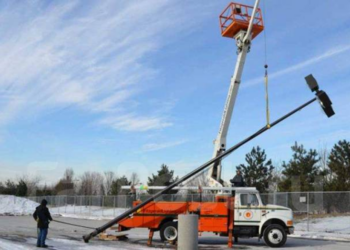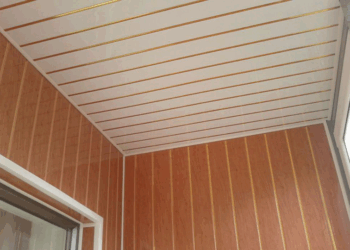— Global warming
— Increase in sea level
— The disappearing swampy places
— Coral bleaching
— Coastal erosion
— Flood
— The disappearing islands
— Ending glaciers and ice sheets
— An increase in infectious diseases
The pace of global warming and increasing sea level during this century could be destructive. The alleged Land losses range from 0.05 % for Uruguay at about 80 % for the Majuro atoll in the Marshall Islands.
With global warming on the whole planet, the weather changes every day. Weather in the USA, Europe, Africa, Russia, Ukraine, then in their cities — the weather in Kyiv, the weather in England, the weather in America, and so on, has specifically changed compared to the foreseeable weather indicators, and continues to change in a very short time and continues.
The effects of global warming affects the increase in sea level 1m (3-foot) which would affect 6 million people in Egypt, from 12 % to 15 % of the lost arable land, 13 million in Bangladesh, from 16 % of national rice production, lost, and 72 million In China and «tens of thousands» of hectares (1 hectare = 2.47 are) arable land.
Small, low island states and countries with a large coastal population, such as the Marshalls of the island and Bangladesh, could see catastrophic damage from an increase.
Global warming is fundamentally increased, since the temperatures of the ascent of the Earth melt Arctic sea ice and Antarctica.
Ice sheets and melting glaciers
All over the world, ice sheets and glaciers melt at a level, unprecedented, as the records began. Changes in the field and volume of two polar ice sheets in Antarctica and Greenland are confusing with changes in the world climate and could lead to changes in sea level, which strictly affect the densely populated coastal areas on Earth.
In Antarctica, the Western Antarctic Ice List is currently compressed significantly, and has been over the past decade.
In Greenland, an ice sheet, which shrinks sharply at the edges and grows on its higher internal elevations, such that there is a pure ice loss that is much more than it, was the last decade. The massive ice sheet of Greenland has lost almost 100 megatons of ice recently, a large part of it in the regions of low elevation along the southeastern coast of the continent.
These losses are the result of increased melting, and a faster stream on the edges, like floating ice that surrounds parts of Greenland and supports some of the output glaciers, melts.
The low coastal regions of Greenland lost 155 megatons (41 cubic miles) of ice annually between 2003 and 2005 from unnecessary melting and icebergs, while the interior of high elevation received 54 megatons (14 cubic miles) annually from unnecessary snowfall.
NASA satellite data showed regional changes in the weight of the Greenland ice sheet between 2003 and 2005. Low (blue) coastal areas lost three times more ice annually from excess melting and icebergs than the interior of high elevation (orange/red) obtained from excess snowfall.
NASA data show that the Arctic constant sea ice, which usually experiences summer, melts the season, and remains year -round, abruptly reduced by 14 percent between 2004 and 2005. According to researchers, the loss of constant ice in the eastern northern Arctic Ocean approached 50 percent during the time of the ice moved from the East Arctic to the west. A complete decrease in the winter Arctic permanent sea ice total amounts of 280,000 square miles — the area size of Texas. Constant ice can be 10 or more feet thick. This was replaced by new, seasonal ice only one — seven feet thick, which is more vulnerable to summer, melting.
According to the National Information Center of Snow and Ice, the naval ice degree of the northern hemisphere, which is measured from passive microwave instruments on board the Noaa satellites, was 5.9 million square kilometers from September 14, 2006, the second is the lowest on the report (left -handed image). This is the fifth sea ice degree in September in a row, was below the long -term (1978-2000) angrily. September level of sea ice decrease — now almost 9 percent of a decade (60 421 square kilometer annually).
Greenland contains approximately 9 percent of all ice on Earth — there is also enough water to raise sea level by 5 meters. If either Western Antarctica or Greenland give their ice sheet to the ocean, most of the southern half of Florida would be under water.
Change in coastal lines due to 6-m increases in sea level. Red denotes the existing land area that will be under water. Eastern American (Home) and South Asia (base).
The full area of the surface of the glaciers around the world decreased by 50 % since the end of the 19th century. Currently, the indicators of the winding of the glacier and the mass loss of balance have increased in the Andes, Alps, Himalayas, Rocky Mountains and Northern Cascades. The snow cap, which covered the top of Mount Kilimanjaro over the past 11,000 years, starting from the last ice age, almost disappeared.
The loss of glaciers not only directly causes landslides, sudden floods and the glacial overflow of the lake, but also increases the annual change in water drainage in rivers. Reducing the last round of the glacier in the summer as glaciers decrease in size, this decrease is already noticeable in several regions. Glachers keep water on the mountains in high years of precipitation, since the snow cover accumulating on the glaciers protects the ice from melting. In warmer and more dry years, glaciers reimburse a lower deposition with a higher input of meltwater.
In 1978, Korey Kalis Glakier was like this, flowing from the glacial cover in the Peruvian mountains.
In 2000, the representation of Kory Kalis changed sharply with a massive 10-Acro lake that forms in the ice region
Permafrost
Global warming can accelerate, since increasing temperatures in the Arctic melting eternal permafrost, forcing him to release greenhouse gases into the atmosphere. Approximately 14 percent of carbon in the world are preserved on the Arctic lands. This could accelerate the «greenhouse effect».
Global warming and gulf Stream
The wind and rotation of the Earth are important in determining the flow of surface flows and limited areas of sharply lifting and downtling, but the true driving force of the deep -sea movement — thermal -shaped treatment.
Sometimes called ocean conveyor tape, this mechanism is responsible for providing oxygen, which withstands life to the deepest limits of the sea, and in the movement of warmer water from the tropics to the poles. The movement of this conveyor tape depends on a decrease in cold water in certain polar regions, thus causing global thermal chatting.
Gulfstim merges into the North Atlantic Stream. This warm water then flows, the Norwegian coast, with a branch moving to the west, heating the tip of Greenland, at 60 ° Nit, retains northern Europe for approximately nine to eighteen degrees warmer in winter than comparable latitudes in another place in another place.
Global warming could change this. Since the freshwater is less densely than sea water, increased precipitation, melting of polar glaciers and glacials could block the system, reducing the amount of cold water that decreases down.
In the Atlantic, warm, drainage of high salinity to the north in Gulf Stream along the east coast of North America. Part of this water continues the north-eastern in the North Atlantic stream to Iceland and Norway. Not far from the shore of Greenland, part of the surface water is cooled, becomes dense, and plums. The further part of the surface water continues to the northern Arctic Ocean before cooling and decreasing. Together these feathers of decrease from Greenland and in Arctic form, “deep -sea”, which plays an important role in the global ocean circulation.












